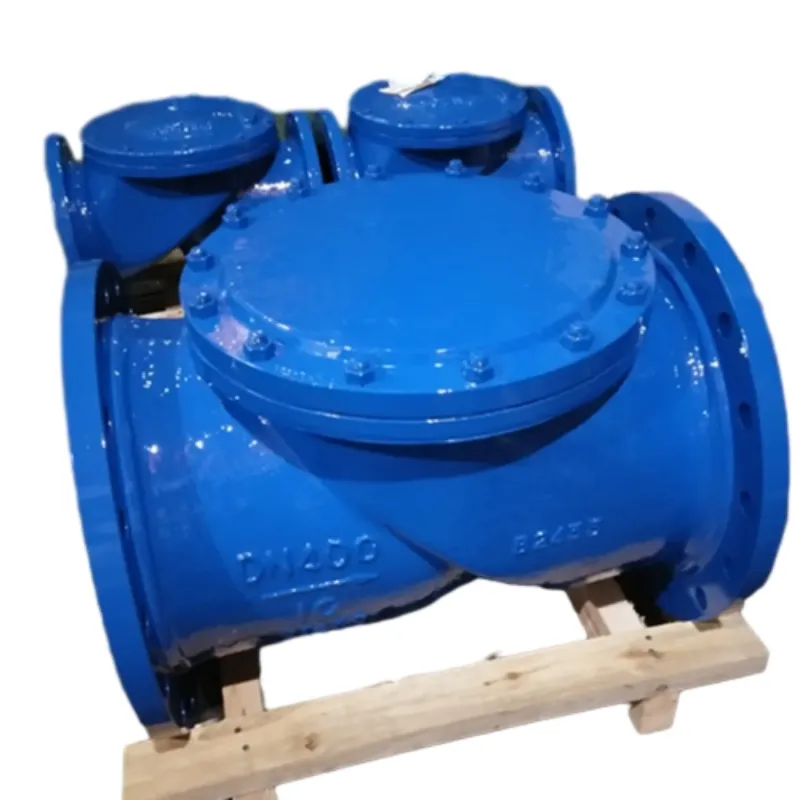Aug . 19, 2024 19:16 Back to list
Inspection of Water Main Check Valve Systems for Optimal Performance
Understanding Water Main Check Valves Their Importance and Functionality
Water main check valves are an essential component of municipal water systems, ensuring the efficient and safe flow of water while preventing backflow. These mechanical devices play a crucial role in maintaining the integrity of water supply systems, protecting them from contamination and pressure fluctuations. Understanding the function, types, and maintenance of check valves is important for both water utility professionals and homeowners.
A water main check valve operates by allowing the flow of water in one direction while preventing any reverse flow. This one-way operation is vital for a few reasons. Firstly, it helps to maintain consistent water pressure throughout the delivery system. When water flows through the mains, check valves ensure that it continues forward and does not backtrack, which can cause significant issues, including pipe bursts and contamination of the supply.
Different types of check valves are designed to suit various applications and needs. The most common types include swing check valves, lift check valves, and diaphragm check valves. Swing check valves, which utilize a hinged disc to control flow, are widely used in large pipeline systems due to their robust performance and reliability. Lift check valves, on the other hand, rely on a movable disc that lifts off a seat to allow fluid to pass. They are particularly effective in smaller diameter pipelines where space may be limited. Diaphragm check valves, as the name suggests, use a flexible diaphragm to control flow, making them suitable for applications requiring precise flow control.
water main check valve

The installation and maintenance of check valves are crucial for their functionality. A properly installed check valve can significantly reduce the risk of water hammer, a phenomenon that occurs when the flow of water is suddenly stopped or changed, causing shock waves in the pipes. It’s important to ensure that check valves are installed in the correct orientation and that they comply with local plumbing codes.
Regular maintenance of check valves is also necessary to ensure their longevity and efficiency. Over time, sediment and debris can build up, potentially obstructing the valve's movement and leading to malfunctions. Routine inspections should be carried out to clean the valves and check for signs of wear and tear. Recognizing early signs of failure, such as irregular water flow or backflow occurrences, can prevent more significant issues and costly repairs down the line.
For homeowners, understanding the importance of check valves in their plumbing systems is beneficial. If your property has a basement or is located in a flood-prone area, installing check valves can provide an extra layer of protection against flooding and water damage. These devices can be integrated into residential plumbing systems to protect against backflow from overloaded municipal systems or during heavy rainstorms.
In summary, water main check valves are vital components that safeguard municipal water supplies from contamination and ensure the efficiency of water distribution systems. Their role in preventing backflow and maintaining pressure cannot be overstated. By understanding their types, functionalities, and maintenance needs, both water utility professionals and homeowners can ensure the safety and reliability of their water delivery systems. Investing time and resources into proper check valve management not only protects infrastructure but also contributes to public health and the preservation of clean water resources.
-
Water Valve Gate Design Prevents Leakage and CorrosionNewsJul.11,2025
-
Steel Fab Table Features Reinforced Construction for LongevityNewsJul.11,2025
-
Specialized Valve Designs for High Pressure SystemsNewsJul.11,2025
-
Machinist Gauge Pins Feature Ground and Lapped FinishesNewsJul.11,2025
-
Hose Check Valve Prevents Backflow in Irrigation LinesNewsJul.11,2025
-
Durable Micrometer Tools Withstand Heavy Workshop UseNewsJul.11,2025
Related PRODUCTS









